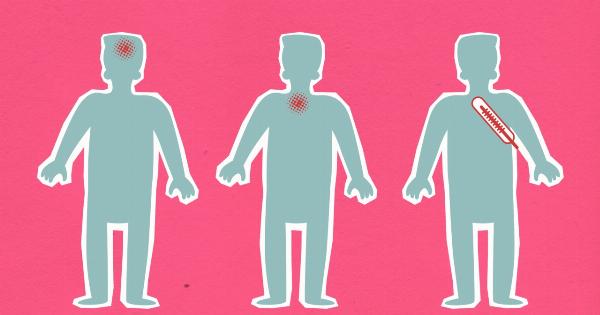Tonsils are small masses of tissue located at the back of the throat, on either side. They play a vital role in the immune system, acting as filters to trap and prevent harmful bacteria and viruses from entering the body.
However, sometimes the tonsils can become infected, leading to the development of pus-filled tonsils.
Infections of the tonsils can be caused by various bacteria or viruses, with the most common culprit being Streptococcus pyogenes, which causes strep throat.
These infections can occur in people of all ages, but are most commonly seen in children and adolescents.
Causes of pus-filled tonsils
There are several factors that can contribute to the development of pus-filled tonsils:.
1. Bacterial infections
Bacterial infections, particularly strep throat, are one of the primary causes of pus-filled tonsils. When the tonsils become infected, they may swell and become red, with white or yellowish spots or patches of pus appearing on their surface.
2. Viral infections
Viruses such as the common cold virus, influenza virus, or Epstein-Barr virus, can also lead to tonsillitis and the formation of pus-filled tonsils.
Viral tonsillitis is usually accompanied by other symptoms like cough, runny nose, fever, and general malaise.
3. Poor oral hygiene
Inadequate oral hygiene can create an environment conducive to bacterial overgrowth, increasing the risk of tonsil infections.
Regularly brushing your teeth, using mouthwash, and cleaning your tongue can help prevent bacterial growth and reduce the likelihood of developing pus-filled tonsils.
4. Weakened immune system
A weakened immune system makes it easier for bacteria and viruses to invade the tonsils. Factors that can weaken the immune system include chronic illnesses, stress, malnutrition, and certain medications.
5. Close contact with infected individuals
Tonsil infections are highly contagious, and close contact with someone who is infected can increase the likelihood of developing pus-filled tonsils. This is especially true in crowded places like schools or daycare centers.
Symptoms of pus-filled tonsils
Pus-filled tonsils are typically accompanied by various symptoms, which may vary depending on the underlying cause of the infection. Common symptoms include:.
1. Sore throat
A persistent, painful throat is one of the primary symptoms of tonsil infections. Swallowing becomes difficult, and the pain may radiate to the ears.
2. Difficulty swallowing
The inflammation and swelling of the tonsils can make it challenging to swallow food and liquids. This can lead to a reduced appetite and dehydration.
3. Fever
The body’s natural response to infection is an increase in body temperature. The presence of pus-filled tonsils often leads to fever, which may be accompanied by chills and body aches.
4. Bad breath
As bacteria thrive in the infected tonsils, they can produce a foul odor, resulting in bad breath or halitosis.
5. Enlarged lymph nodes
The lymph nodes in the neck often become swollen and tender in response to tonsil infections.
Treatment options for pus-filled tonsils
Proper treatment of pus-filled tonsils depends on the cause and severity of the infection. Here are some common treatment options:.
1. Antibiotics
If the infection is bacterial in nature, a course of antibiotics will usually be prescribed. It is crucial to complete the full course of antibiotics as prescribed by the healthcare provider to ensure complete eradication of the infection.
2. Pain relief
Over-the-counter pain relievers such as acetaminophen or ibuprofen can help alleviate the pain and reduce fever associated with pus-filled tonsils. Gargling with warm salt water can also provide temporary relief.
3. Surgery
In severe cases or when tonsillitis becomes chronic and recurrent, a doctor may recommend a tonsillectomy. Tonsillectomy is the surgical removal of the tonsils and is typically performed under general anesthesia.
Prevention of pus-filled tonsils
While it may not always be possible to prevent tonsil infections, there are certain measures that can reduce the risk:.
1. Practice good hand hygiene
Frequent handwashing with soap and water, especially before eating or touching the face, can help prevent the spread of bacteria and viruses.
2. Avoid close contact with infected individuals
Limiting exposure to people with known infections, especially during flu and cold seasons, can help reduce the chances of developing pus-filled tonsils.
3. Maintain a healthy lifestyle
A strong immune system is essential in fighting off tonsil infections. Eating a balanced diet, getting regular exercise, and managing stress can help strengthen the immune system.
Conclusion
Pus-filled tonsils are a common symptom of tonsil infections, which can be caused by bacterial or viral pathogens. Prompt diagnosis and appropriate treatment are crucial to prevent complications and promote recovery.
Maintaining good oral and overall hygiene, along with practicing preventive measures, can help reduce the risk of developing pus-filled tonsils.





























